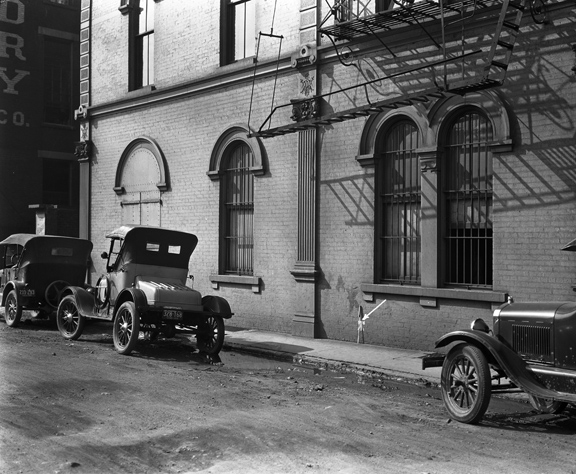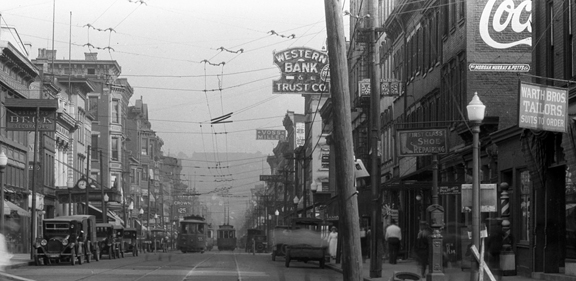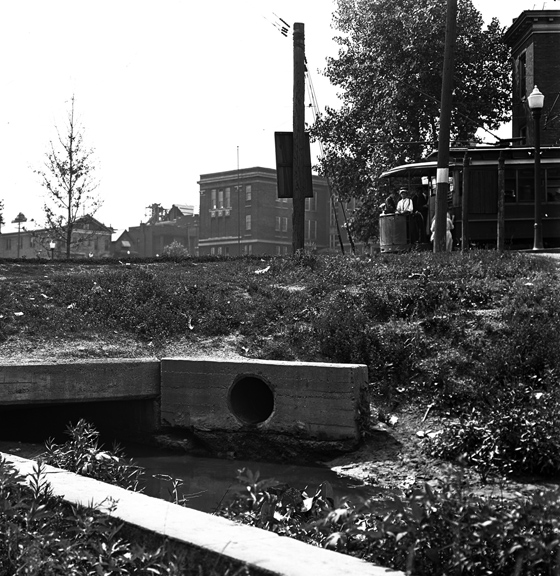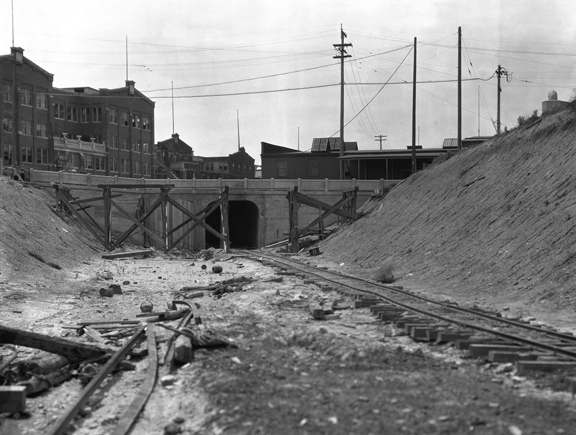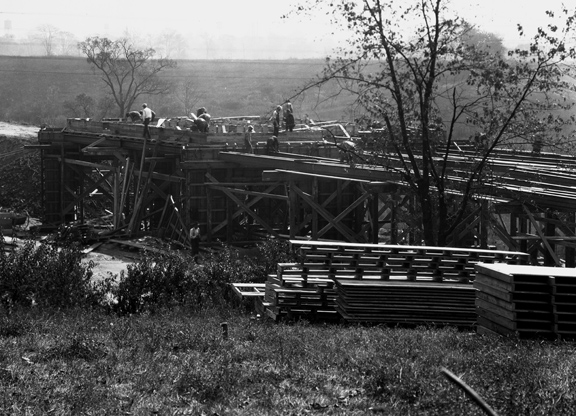By: Angela Vanderbilt
Downtown Cincinnati at the turn of the 20th century was a bustling business and commercial center, but with a dangerous mixture of pedestrians, horse-pulled wagons and carriages, street cars, and unseasoned automobile drivers. Add to this a mess of unpaved or cobblestoned streets, a lack of traffic laws, speed limits, and stop signs at intersections, with streetcar tracks criss-crossing lanes. It was a recipe for disaster.
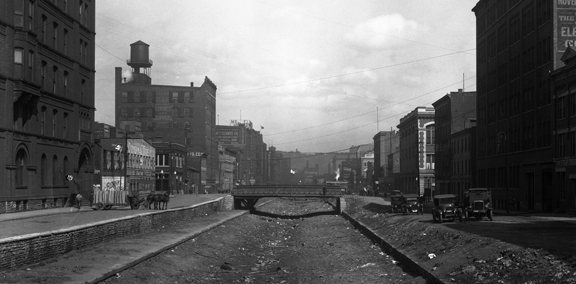
On the left, deliveries to the Raschig School are unloaded from a horse-drawn wagon while, on the right, automobiles park along a drained Miami & Erie Canal, looking east down Canal Street as subway construction begins, April 20, 1920
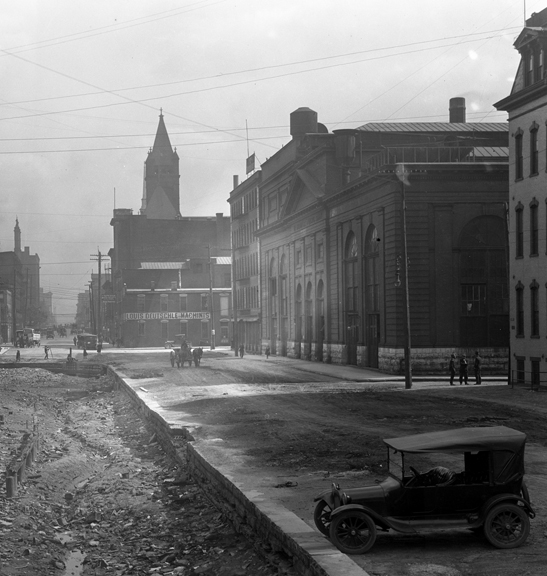
Horses, pedestrians, and cars share the road alongside the Miami & Erie Canal at the Plum Street bend, looking south from 12th Street bridge, May 14, 1920
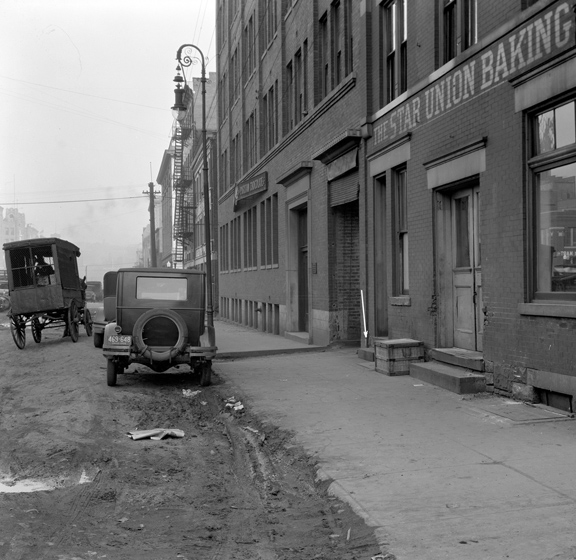
Street conditions at Race Street and Central Parkway in front of Star Union Baking Company & Puritan Chocolate Company, November 12, 1926
In 1917, the citizens of Cincinnati approved a bond issue with the goal of alleviating the traffic issues of the day through the construction of a subway. The two main benefits of the subway were to alleviate the increasing volume of traffic in the downtown area, and to provide citizens with easier access into the downtown from the interurban trains that serviced the outlying areas.
Interurban lines were a convenient means of traveling from one outlying community to another, but they did not provide a direct route into downtown. Riders would have to change trains and then wait for street cars to make the trip into the business district. But by looping a subway line from the downtown through the outlying community served by the interurban, passengers could hop on the subway and ride directly into the downtown without having to make any additional changes. Traffic congestion issue solved!
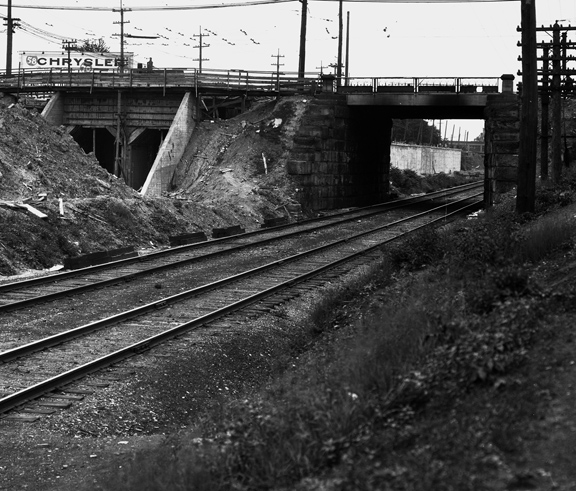
Western end of subway through Norwood at Montgomery Pike underpass, running parallel with B&O Railroad, June 3, 1926
But by 1926, all but the College Hill interurban lines were out of business, and automobile ownership had nearly doubled. In the downtown area, the majority of streets were paved with cobblestones or bricks, but even these were showing signs of wear and in need of repair. The street department also struggled to keep pace with housing construction in the suburban areas, as more and more Cincinnatians were moving to the suburbs, content with their new automobiles to accommodate their transportation needs. Asphalt and concrete paving slowly made its way into the suburban neighborhoods in the mid-1920s, replacing the rutted dirt roads that most residents had to maneuver with their new Model Ts. Granted, the street conditions in Cincinnati today aren’t terrific, but (and it takes a lot of me to say this) we are better off than the poor folks who had to bounce along the ruts in the images below!
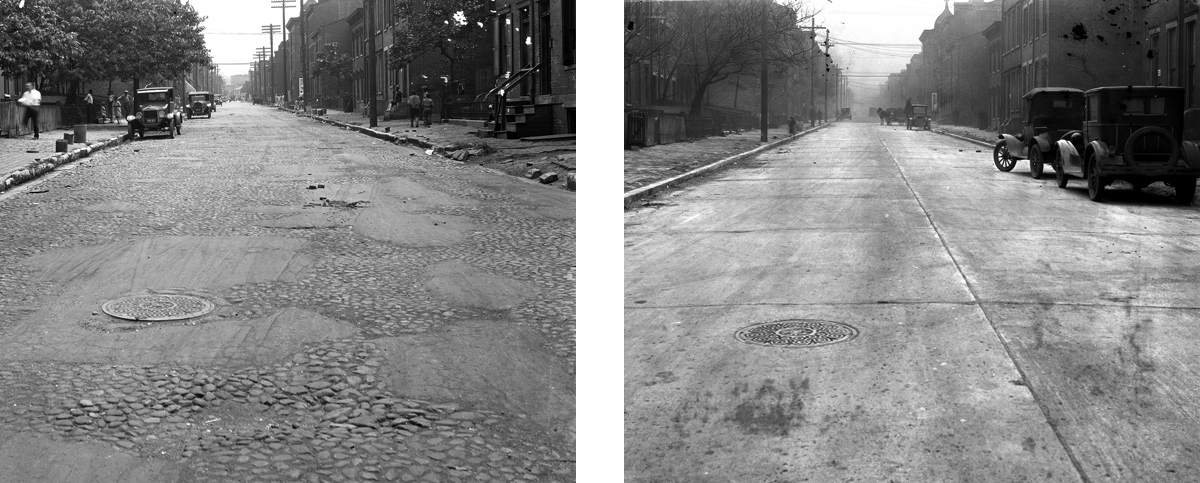
Barr Street looking east, before street improvements, August 2, 1928 (left), and after street improvements, March 9, 1929 (right)
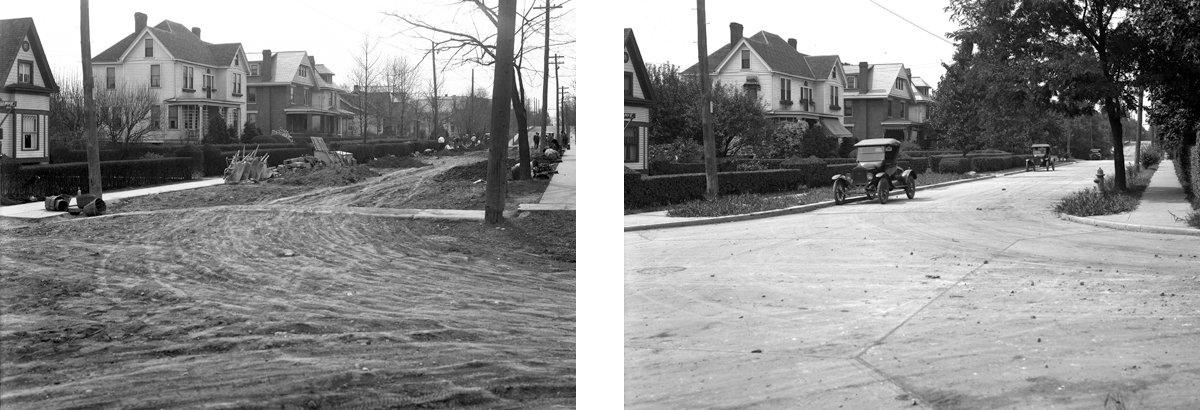
Arnsby Avenue, before street improvements, October, 1927 (left), and after street improvements, July, 1927 (right)

Attica Avenue, looking south from Swift Street, before improvements, March 3, 1927 (left) and after improvements, July 7, 1927 (right)
 This project is funded by a grant for $60,669 through the Library Services and Technology Act, administered by the State Library of Ohio.
This project is funded by a grant for $60,669 through the Library Services and Technology Act, administered by the State Library of Ohio.

